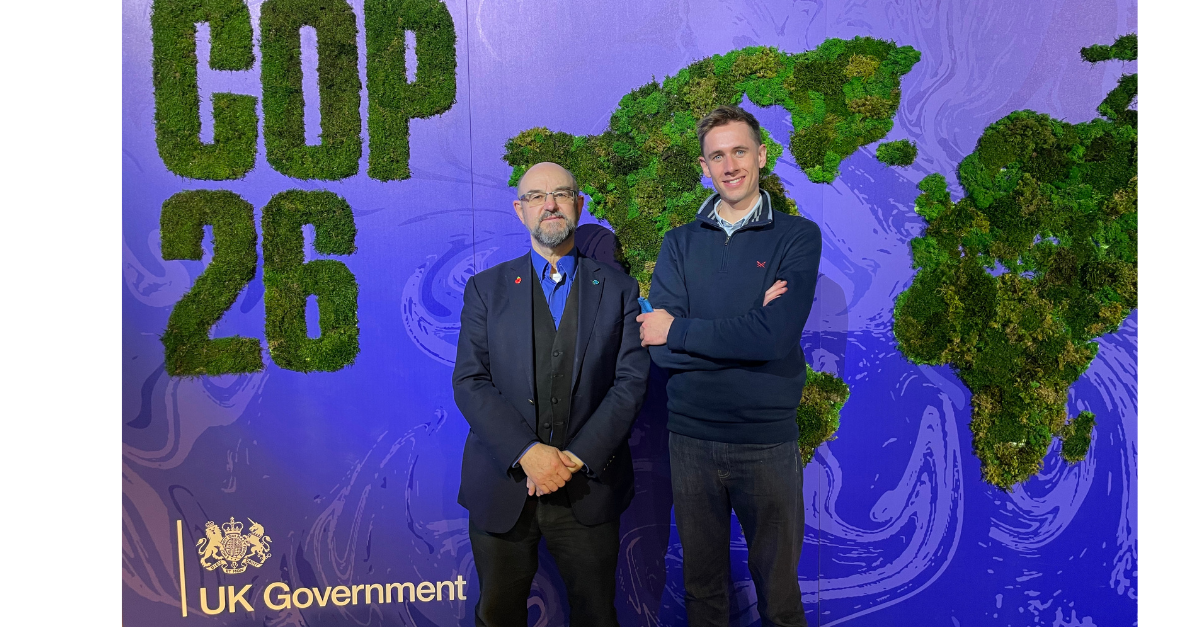COP27: a breakthrough for climate justice and a breakdown for climate ambition
As the world’s media and climate commentators emerge bleary-eyed and sleep-deprived into the bright Sharm El-Sheikh sunlight, the question on everyone’s lips is: was COP27 a success? Well, not to cop out, but it depends on how we define success.
The incoming Presidency, Egypt, had their work cut out for them going into this COP. A world in the grip of multiple overlapping crises – debt, inflation, energy, war, and the increasingly destructive impacts of climate change – does not provide an easy path to reaching a consensus agreement on so many crucial but contentious issues. That shows in the detail of the Sharm El-Sheikh Implementation Plan: a mixed bag of lack of ambition and weakening of key rules, but a hugely significant step forward on the issue of financial compensation for the worst impacts of climate change.
With the remaining carbon budget for a 50% likelihood of limiting warming to 1.5°C now 9 years at current rates of emissions and with global emissions continuing to rise, the science is clear that immediate, dramatic reductions in emissions are necessary if we are to minimise the damage caused by climate change and to achieve the goals of the Paris Agreement. Countries failed to agree increased ambition on emissions reductions and the need to peak emissions by 2025. The idea of expanding last year’s historic inclusion of a coal phase down at this year’s COP to encompass all fossil fuels did not make it into the final text, despite a groundswell of support from a diverse set of countries – this will definitely be one to watch at COP28 next year. In fact, a last minute alteration to the text expanded the promotion of renewable energy to include ‘low carbon’ energy, which due to the lack of definitions risks allowing countries to lock in investment in natural gas.
Last year in Glasgow, rules were agreed that enabled the trading of carbon credits between countries. This year, rules were agreed for companies purchasing credits from countries, which will help to expand the carbon offset markets. However, as these rules are much weaker than those agreed in Glasgow and risk the double counting of emissions reductions, those engaging in such markets risk opening themselves up to criticisms of greenwashing if used to help offset emissions in their portfolios. They also risk running foul of the UN High-Level Expert Group on the Net Zero Commitments of Non-State Entities’ recommendations regarding the use of offsets, which calls for them to only be used as additional mitigation efforts on top of real value chain emissions reductions, rather than as a means to demonstrate compliance with emission reduction targets.
The most significant positive of this summit was the outcome on Loss and Damage, the idea that wealthier countries should pay financial compensation to those who are suffering from the impacts of climate change but who have not been as responsible for causing it. This has always been an incredibly contentious issue, with strongly held views on both sides. The EU’s dramatic volte-face in its position midway through the second week of talks provided space for hope amongst the most climate vulnerable countries and put pressure on the US and other developed nations to agree to a new Loss and Damage fund. The EU attached a number of strings to its support for such a fund, including the need for enhanced emissions reductions and that other heavily-emitting nations such as India and China should contribute. Whilst demands for the former were unsuccessful, it remains to be seen whether the latter will bear fruit during the next year of intense work to flesh out the rules of the fund ahead of COP28. It shouldn’t be underestimated just how totemic this issue was within the negotiations, and agreement on the principle of Loss and Damage will do a lot of good in rebuilding faith and trust in the multilateral climate system amongst developing nations.
In just under a fortnight’s time, the second half of the Biodiversity COP15 negotiations will kick off in Montreal. Increasingly, the intersection of climate and nature is attracting greater awareness and the same must go for the multilateral systems set up to defend them: efforts to reduce emissions must be done in a way that protects biodiversity and ecosystems. At COP27, the hottest ticket in town was to see President-elect Lula speak, whose message of ‘Brazil is back’ gave a much needed boost to demoralised negotiators. Lula set out the strength of his ambitions to halt deforestation and work together with other rainforest nations to secure greater funding from wealthy nations; a plan that’s already bearing fruit with Norway and Germany restarting the Amazon Fund.
So, if we judge this year’s climate talks by whether they helped bend the curve closer towards holding global temperature increases to 1.5°C, then we have to be honest and say COP27 was a failure: countries did not build on the outcomes of Glasgow nor come forward with greater ambition; calls to include reducing the use all fossil fuels in the Sharm El-Sheikh Implementation Plan got nowhere; and, the weak rules on carbon trading risk opening up this emerging market up criticisms of greenwashing. But from the perspective of those on the front line of the climate crisis, facing sea level rise, saltwater encroachment, droughts, floods and forest fires made worse by increasing temperatures, the outcome on Loss and Damage is a critical win to restore some level of climate justice.



